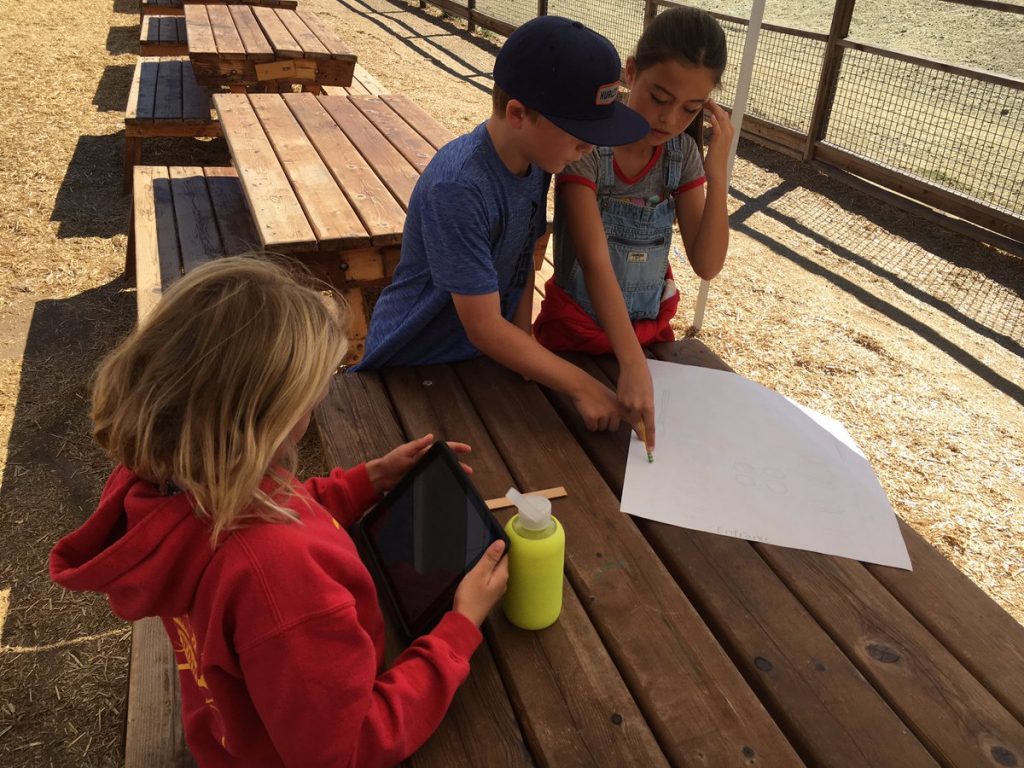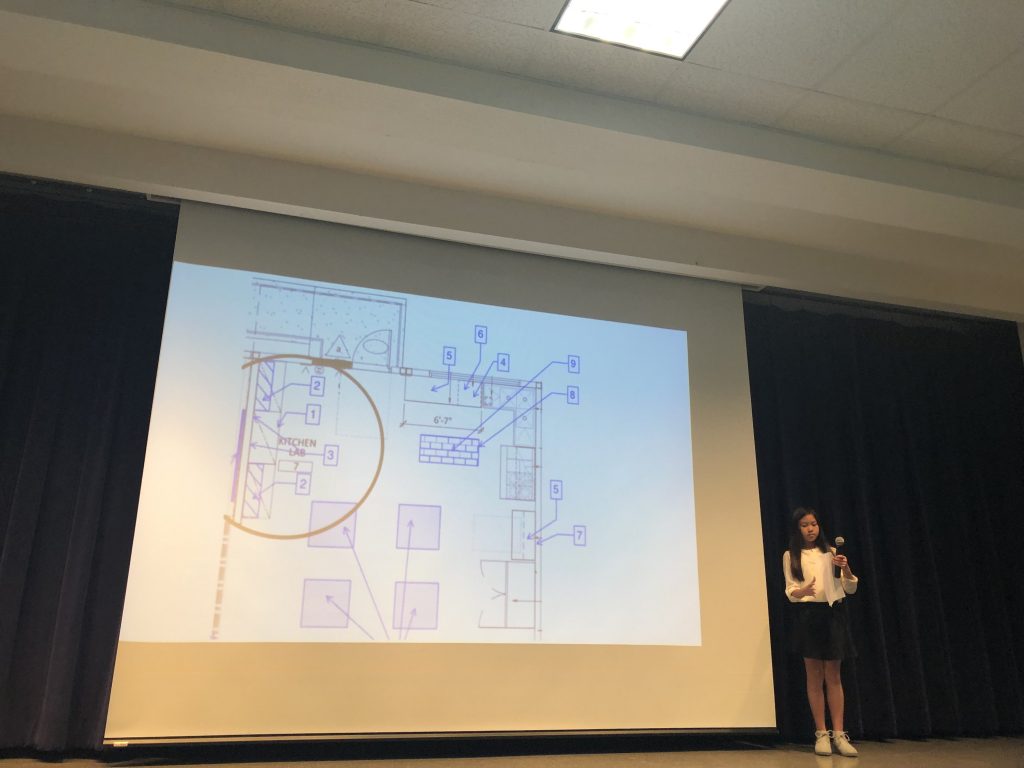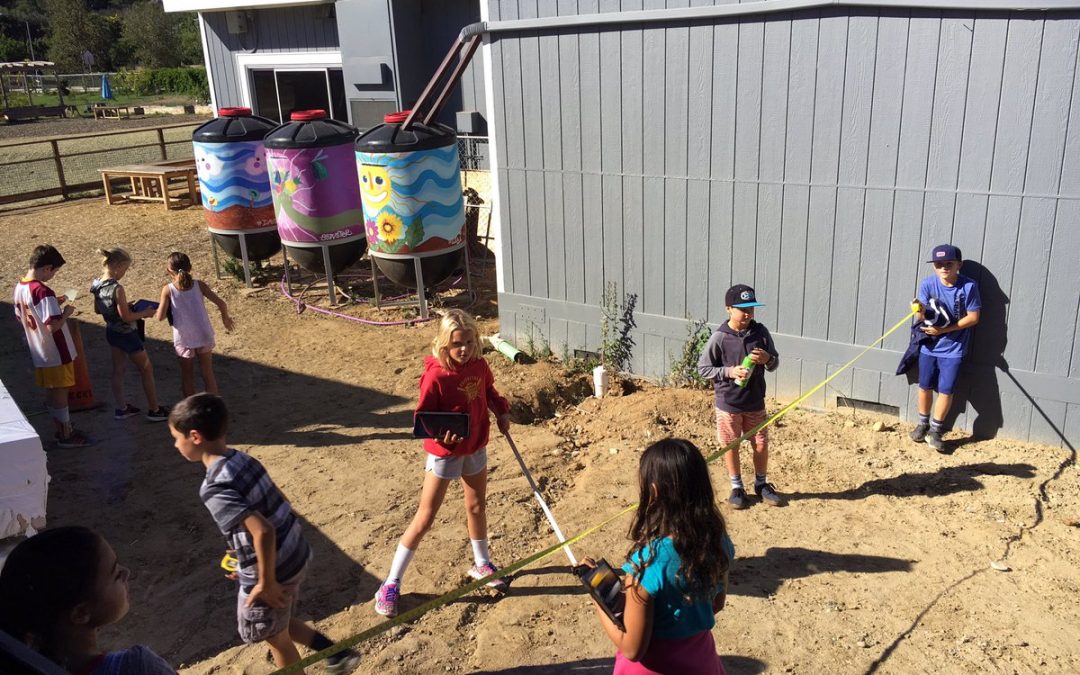By. Dr. Andrée Grey
There’s no question that real work and research makes for more engaging learning. That’s never more obvious than when we put students at the center of a problem in a place that evokes curiosity and creativity for fieldwork. In Encinitas Union School District (EUSD), we have seen a shift from learning experiences that are based on a product or project’s outcome to those that engage with the spaces, places, and partners in our region for authentic fieldwork.
Three major shifts occurred to support this evolution in practice. These include:
- Starting with student generated questions;
- Intentionally using experts as part of authentic research; and
- Considering partners who provide interesting places, spaces, and perspectives for real work.
To ground these shifts in a fieldwork example, let’s take a look at what occurred at the Encinitas Farm Lab DREAMS Campus, under the direction of Julie Burton, Coordinator of Innovation and Farm Lab Development. EUSD needed to redesign several open spaces and two empty refurbished portables on the 10-acre Farm Lab property that weren’t being used. As the ultimate end users, students were looped in to help design the new Farm Lab spaces. To start, they identified interest areas of the property – kitchen, classroom spaces, and outdoor spaces – and assembled into collaborative groups based on interest areas. They then visited their assigned location and observed the space, recorded questions, took pictures, and jotted down thoughts and ideas.
During the redesign process, students and staff used a planning tool called QUEST, created by retired EUSD Superintendent Tim Baird, to consider a systematic protocol for design and research as part of project-, problem-, and place-based learning. Students moved through each of QUEST’s components (Q-questions, U-understand, E-explore/experience/experiment, S-solve, and T-tell) to anchor the fieldwork process.
The first shift corresponds to the first component of QUEST. Questions and more questions were conjured by students as they began their fieldwork. They had so many questions that they were literally bursting to get started! What is our budget? Could we put a pond in that space? What items go in a maker space? What is the difference between commercial-grade furniture and regular furniture? However, EUSD’s emphasis on research and design taught us to make sure that students slow down during the research phase. A deep understanding of the diverse variables is needed to lead to a better outcome for students. This ensures implementation of sustainable best practices when students problem-solve to reach viable solutions.

The second shift included communication with real experts. Students no longer see research as something that starts with a search engine. Fieldwork involves dialoguing, interviewing, and connecting to industry professionals, community members, and/or individuals who are affected by the area of study. Including local designers, landscapers, and environmentalists as part of the research process elevates the quality of student research, connects students to their community, and exposes them to careers in an authentic manner. Many of these experts are often EUSD employees.
For the Farm Lab redesign, we had experts who engaged with all the student groups, such as Evan Marks, Executive Director of The Ecology Center. He spoke to students about the aspects of design related to nature and how using a property’s natural features and lines creates symmetry and purpose. He fielded student questions about aesthetics and color choices and the importance of sustainable materials in the vision. We also had experts who spoke to each group’s specific needs as they started to ask questions about possibilities. For example, one group of students reached out to and skyped with Dr. Robert Dillon, co-author of The Space: A Guide for Educators (2016), to find out what should be in a maker space and how that’s determined.
Research also came from engaging with students at the school site. For example, one group created a student survey to learn more about their interests and needs and how they envisioned using the Farm Lab space. We’ve had tremendous success accessing individuals to bring on-site. When that’s not possible, we’ve used technology tools such as Skype and Nepris to ensure two-way communication happens between students and industry experts.
Fieldwork relies on partnerships, which is the third shift. Although our schools can provide opportunities for fieldwork, expanding the classroom to the community through partnerships establishes important connections and civic engagement opportunities for our students. These opportunities make learning relevant as they see how their efforts matter in a context larger than themselves or the school. In this case, partnerships with The Ecology Center, YMCA, and local maker spaces gave students access to experts in spaces and places that could enhance their learning.
Partnerships also provide problems to solve. Our students engage in fieldwork in all types of local places in our community, not just those involving Farm Lab. Students use several local facilities for fieldwork experiences, such as the San Elijo Lagoon, San Diego Botanic Garden, and local trails and canyons. These partnerships all support the end projects that are presented by student groups. We’ve had local partners attend presentations where students carry out the final step of QUEST – Tell. In the case of the Farm Lab redesign, we had experts come and listen to each group’s presentation of research, designs, and blueprints for the various spaces on the Farm Lab DREAMS campus. Afterward, the students’ work was reviewed by EUSD’s leadership team.

In December 2019, almost ten months after the students started the project, the new Farm Lab areas were revealed to educators and community members at an open house. Each area and detail were crafted, suggested, researched, and presented by students. This was the end result of their months of fieldwork – student-designed indoor and outdoor learning spaces for students and teachers. Students and teachers will begin using the redesigned spaces this month. Their next fieldwork design challenge will be the design of a living playground on the site.
Fieldwork is one of the most transferable skills for 21st century learning – it requires students to engage in questioning, collaboration, research, critical thinking, strategic planning, and taking action. The value was clear when we asked our students what they learned from this fieldwork experience in this video. Their answers match the definitions and exemplars seen in P21 Partnership for 21st Century Learning.
We have endless spaces and issues to solve. If we want to create future thinkers and doers, we must believe they can do that work now. As students grapple with local and global challenges, they practice skills that create better solutions for the future. Deepening the educational experience with well-thought-out experiential fieldwork engages learners with authentic research, critical thinking, empathy, and creativity as students learn by doing.
Author Bio
Andrée Grey, Ed.D. serves as Superintendent for Encinitas Union School District (EUSD). EUSD most recently was named District Administration Magazine’s District of Distinction and was recognized this year as a P21 Exemplar District, noting the innovative learning opportunities for all students. As Superintendent, Andrée helps lead the district’s efforts surrounding academic excellence, environmental stewardship, instructional technology, and health and wellness for students. EUSD is proud to have received national recognition as a U.S. Department of Education Green Ribbon School District and strives to continue to develop innovative practices to inspire action in the area of environmental stewardship.

